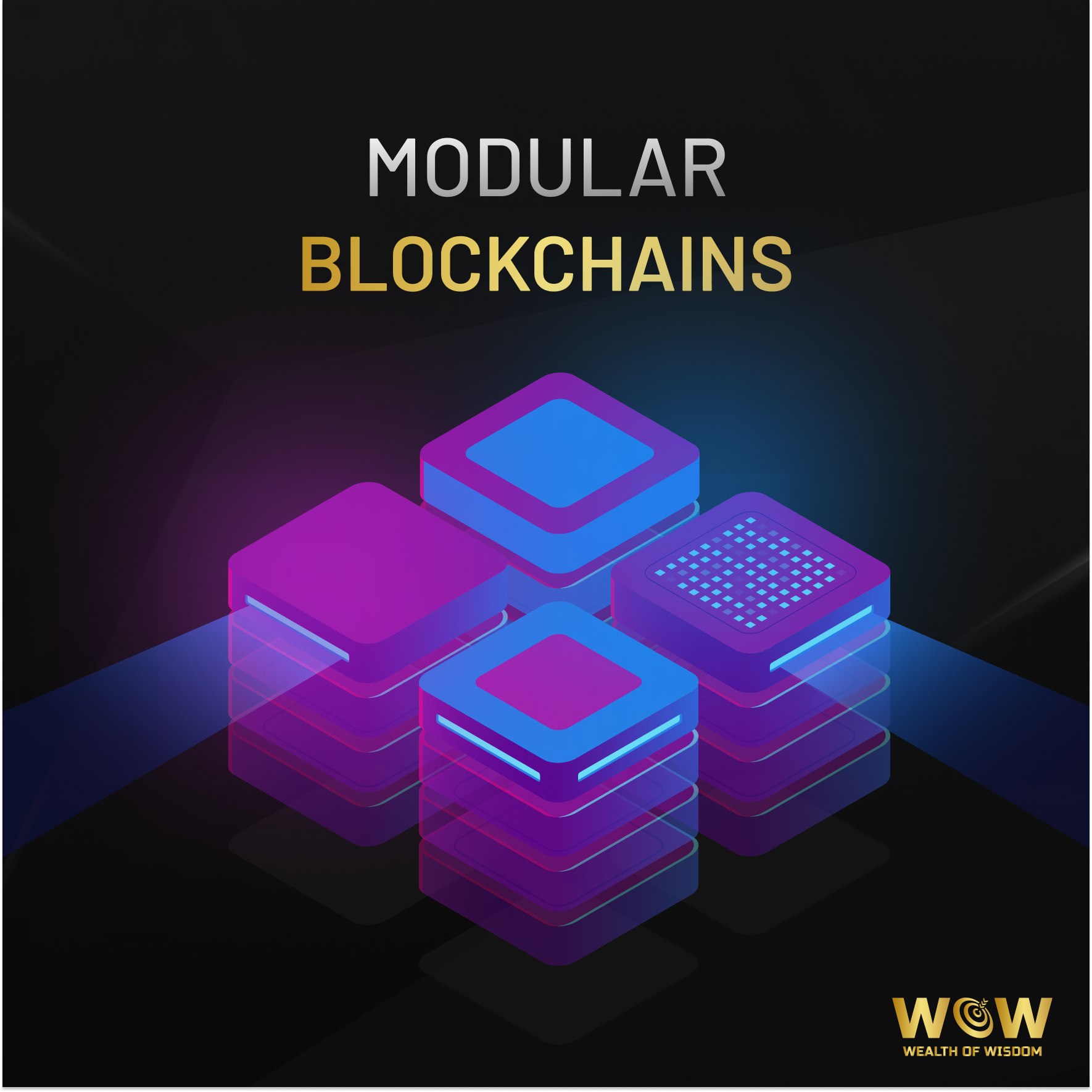Blockchain technology, celebrated for its decentralised, secure, and transparent nature, has sparked innovation across various industries. Yet, as blockchain adoption increases, scalability remains a major bottleneck. Traditional blockchains struggle to handle the growing transaction volumes, potentially limiting the technology’s broader use. Enter modular blockchains—a promising solution poised to unlock blockchain’s true potential by addressing the scalability challenge while maintaining security and decentralisation.
In this article, we’ll explain modular blockchains, their advantages over monolithic designs, and how this new architecture could pave the way for the next generation of decentralised applications (dApps).
Monolithic Blockchains: The Foundation but with Limits
To appreciate the shift towards modular blockchains, it’s important to understand the monolithic blockchain architecture.
Monolithic blockchains integrate all key functions—consensus, execution, data availability, and settlement—into a single layer. Prominent examples include Bitcoin and Solana. In these systems, every node in the network is responsible for performing all tasks, which results in robust security but limits scalability as transaction volume increases.
Advantages of Monolithic Blockchains
- Simplicity: The single-layer design simplifies network implementation and maintenance, making it more accessible for developers. Monolithic blockchains have a straightforward structure that reduces complexities seen in multi-layered systems.
- Proven Security: Monolithic blockchains like Bitcoin have demonstrated strong security and reliability over many years, building user trust and operational integrity.
Disadvantages of Monolithic Blockchains
- Limited Scalability: As network activity increases, monolithic blockchains experience congestion. This is because all nodes must process each transaction, which increases fees and slows down the system.
- Difficulty in Upgrading: Upgrades and technological advancements in monolithic blockchains are difficult to implement due to their rigid, all-in-one architecture. This can hinder the network’s evolution and adaptability.
Modular Blockchains: Unlocking Scalability through Specialization
Modular blockchains offer a radically different approach by breaking down the core components—execution, consensus, data availability, and settlement—into specialised layers. Each layer performs a specific function and can be optimised independently. This segmentation allows for higher transaction throughput, more flexible upgrades, and the ability to cater to diverse applications without sacrificing security.
In essence, modular blockchains distribute the workload across several layers, allowing each layer to handle specific tasks without overwhelming the entire network. This division offers significant scalability improvements over monolithic designs.
Advantages of Modular Blockchains
- Scalability: By spreading tasks across multiple specialised layers, modular blockchains can handle far more transactions simultaneously. This separation reduces the load on any single network, enabling efficient processing even during periods of high activity.
- Security: Each layer in a modular blockchain can be secured independently, reducing the risk of a system-wide failure. Even if one layer faces an issue, it does not compromise the entire system’s security.
- Flexibility: Modular blockchains offer developers the ability to swap out or upgrade individual layers without disrupting the entire network. This flexibility allows for smoother integration of new technologies and easier adaptation to the evolving needs of dApps.
Disadvantages of Modular Blockchains
- Complexity: The layered structure introduces complexity in design and maintenance. Each module must communicate seamlessly with others, requiring sophisticated coordination and technical expertise.
- Shorter Track Record: Modular blockchains are a relatively new innovation, lacking the historical data of monolithic blockchains. This could make them appear riskier for some applications, especially those requiring high stability and long-term reliability.
Monolithic vs. Modular Blockchains: A Direct Comparison
The primary difference between monolithic and modular blockchains lies in their architecture. Monolithic blockchains consolidate all functionalities into a single layer, while modular blockchains split these responsibilities across multiple layers.
Let’s compare both architectures:
| Category | Monolithic Blockchains | Modular Blockchains |
| Scalability | Limited due to all-in-one processing | Higher scalability through task distribution across layers |
| Security | High, as all nodes validate every transaction | Depends on the security of individual layers |
| Decentralisation | Strong, with all nodes involved in consensus | Can vary, often lower than monolithic models |
| Flexibility | Low, as updates require network-wide changes | High, with easier upgrades and layer-specific optimization |
Monolithic blockchains offer robust security and strong decentralisation, but they struggle to scale under high demand. In contrast, modular blockchains provide enhanced scalability and flexibility, allowing developers to choose the best layers for their needs. However, managing the security of individual layers becomes crucial to prevent vulnerabilities.
Real-World Example of Modular Blockchain: Polygon
Polygon is a prime example of a project utilising modular blockchain architecture to enhance scalability. While primarily known as a Layer 2 solution for Ethereum, Polygon optimises transaction execution by processing transactions off-chain and only submitting compressed data back to Ethereum’s main chain.
This separation reduces the load on Ethereum, improving overall transaction throughput and lowering fees without compromising security. Polygon’s modular approach allows it to handle high transaction volumes efficiently, making it a key player in the push for scalable blockchain solutions.
Choosing the Right Blockchain Architecture: Modular or Monolithic?
When choosing between a modular and monolithic blockchain for your project, several factors should guide your decision:
- Decentralisation and Security: If your project prioritises decentralisation and strong security, a monolithic blockchain might be the better fit due to its robust, integrated design.
- Scalability and Efficiency: Projects requiring high transaction throughput, such as those powering decentralised finance (DeFi) or high-volume dApps, are better suited for modular blockchains. These blockchains distribute tasks across layers, enabling more efficient processing.
- Complexity and Economic Risks: Modular blockchains offer customization and scalability, but they introduce design complexities and potential economic risks. Evaluating whether your project can handle this complexity is essential before making a decision.
- Hardware and Network Requirements: Monolithic blockchains typically demand more significant hardware and network resources, while modular blockchains are more resource-efficient, making them a viable alternative for resource-constrained projects.
The Future is Modular
As blockchain technology matures, modular blockchains stand out as a critical advancement. By decoupling core functions and distributing them across specialised layers, modular blockchains offer the scalability, flexibility, and efficiency that traditional monolithic designs struggle to provide. Although the technology is still in its early stages, modular blockchains are paving the way for the next generation of decentralised applications and industries.
For projects looking to scale without compromising security, the modular approach represents a key innovation with the potential to redefine blockchain architecture and unlock new possibilities.








